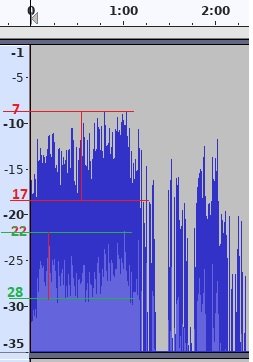FunkyBassMan
500+ Head-Fier
As usual, gregorio's misinformation needs to be corrected.
Ultrasonic frequencies are a total red herring in this context. the article is not about industrial ultrasound hazards...it’s about human-audible content in recorded music. It discusses transient peaks in audio you can hear. Pullingin silent-but-dangerous ultrasonic examples to argue against a headphone article about jazz recordings is like arguing that stairs are dangerous because airplanes crash.First lie: Perception of loudness is a complete red herring; it’s entirely possible to have no perception of loudness at all (a perception of silence) and yet the sound still be “hazardous to your hearing”. For example, a very high sound pressure level (SPL) at ultrasonic frequencies. Perception of loudness is irrelevant to the hazard, what has been clearly demonstrated (for many decades) to be hazardous is the average SPL over time. The higher the SPL, the shorter the duration required to be hazardous (potentially cause Noise Induced Hearing Loss, NIHL). This leads on to the …
This is flat-out wrong. Peak-to. -average ratios for well-mastered music can be 15–25 dB or more. A 130 dB peak does not imply an average of 122 dB. That would be physically painful and completely unlistenable. Most pop music has peaks at 100–105 dB with averages in the 85–90 dB range. Classical music often has 20+ dB of headroom. The article didn’t suggest listening to music at 130 dB—it referenced what’s required to cleanly reproduce the occasional transient spike without clipping. That’s the entire point of headroomSecond lie: If the peak level of a recording is 130dB, then the average level will be no lower than approximately 112dB (typically) in the case of classical music recordings and around 122dB (typically) for popular music genres,
Last edited:













 )
)


